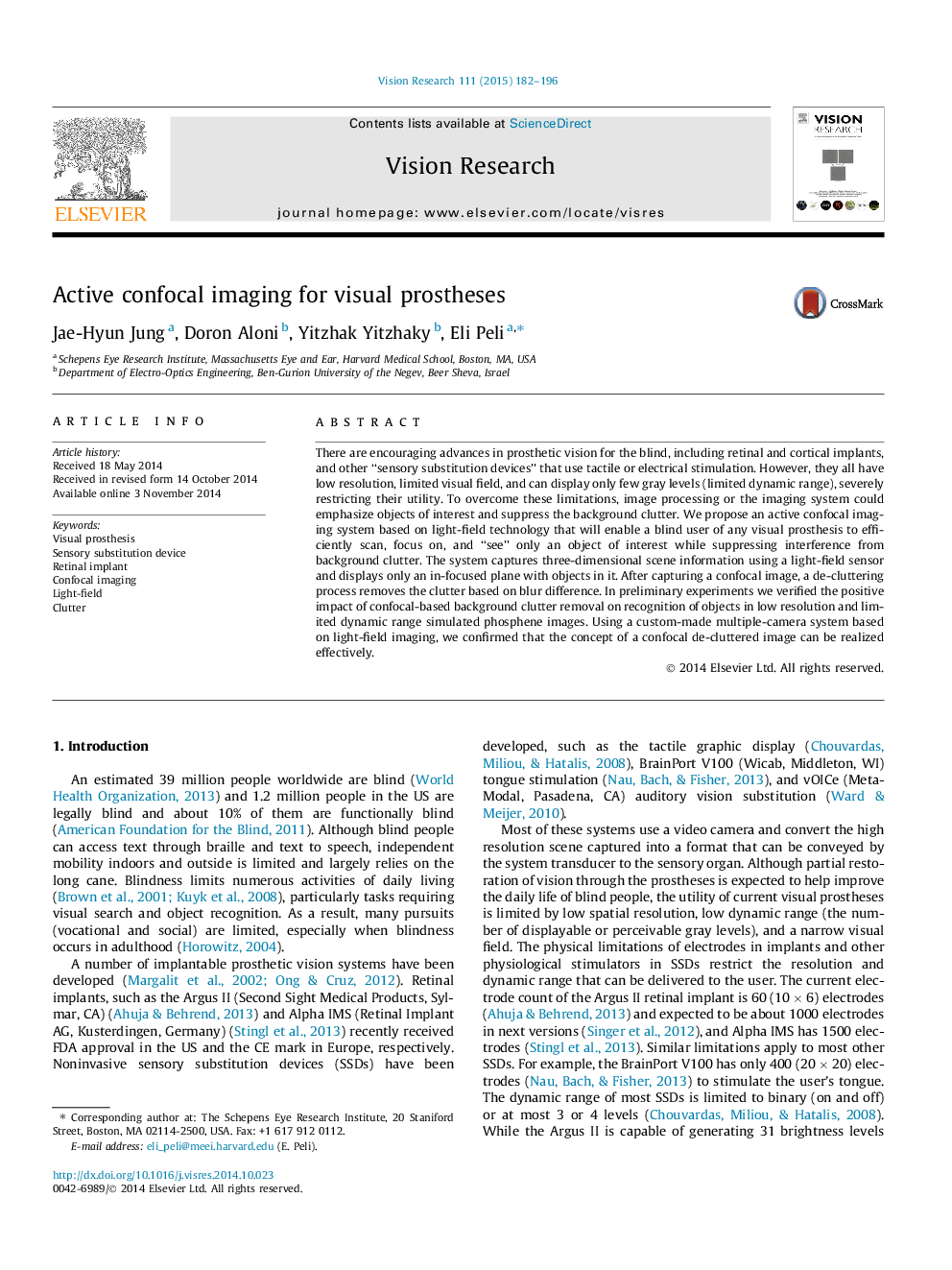| Article ID | Journal | Published Year | Pages | File Type |
|---|---|---|---|---|
| 6203166 | Vision Research | 2015 | 15 Pages |
â¢Clutter makes it difficult to recognize objects in current visual prostheses.â¢Confocal imaging can be used to suppress clutter in visual prostheses imagery.â¢The impact of confocal de-cluttering in simulated phosphene vision was tested with 6 subjects.â¢The value of confocal de-cluttering based on light-field imaging is promising.
There are encouraging advances in prosthetic vision for the blind, including retinal and cortical implants, and other “sensory substitution devices” that use tactile or electrical stimulation. However, they all have low resolution, limited visual field, and can display only few gray levels (limited dynamic range), severely restricting their utility. To overcome these limitations, image processing or the imaging system could emphasize objects of interest and suppress the background clutter. We propose an active confocal imaging system based on light-field technology that will enable a blind user of any visual prosthesis to efficiently scan, focus on, and “see” only an object of interest while suppressing interference from background clutter. The system captures three-dimensional scene information using a light-field sensor and displays only an in-focused plane with objects in it. After capturing a confocal image, a de-cluttering process removes the clutter based on blur difference. In preliminary experiments we verified the positive impact of confocal-based background clutter removal on recognition of objects in low resolution and limited dynamic range simulated phosphene images. Using a custom-made multiple-camera system based on light-field imaging, we confirmed that the concept of a confocal de-cluttered image can be realized effectively.
Graphical abstractDownload high-res image (208KB)Download full-size image
